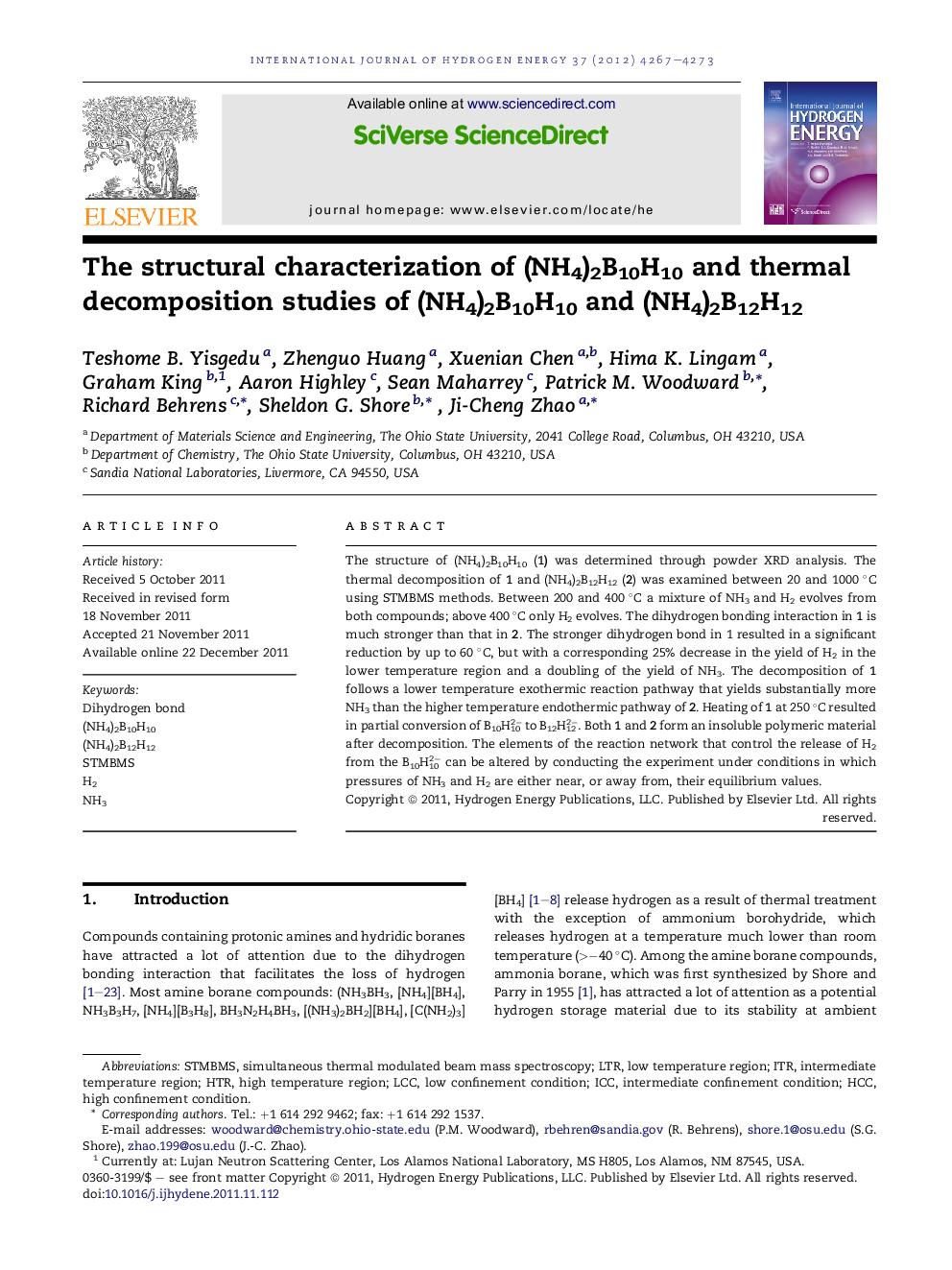| Article ID | Journal | Published Year | Pages | File Type |
|---|---|---|---|---|
| 1275482 | International Journal of Hydrogen Energy | 2012 | 7 Pages |
The structure of (NH4)2B10H10 (1) was determined through powder XRD analysis. The thermal decomposition of 1 and (NH4)2B12H12 (2) was examined between 20 and 1000 °C using STMBMS methods. Between 200 and 400 °C a mixture of NH3 and H2 evolves from both compounds; above 400 °C only H2 evolves. The dihydrogen bonding interaction in 1 is much stronger than that in 2. The stronger dihydrogen bond in 1 resulted in a significant reduction by up to 60 °C, but with a corresponding 25% decrease in the yield of H2 in the lower temperature region and a doubling of the yield of NH3. The decomposition of 1 follows a lower temperature exothermic reaction pathway that yields substantially more NH3 than the higher temperature endothermic pathway of 2. Heating of 1 at 250 °C resulted in partial conversion of B10H102− to B12H122−. Both 1 and 2 form an insoluble polymeric material after decomposition. The elements of the reaction network that control the release of H2 from the B10H102− can be altered by conducting the experiment under conditions in which pressures of NH3 and H2 are either near, or away from, their equilibrium values.
► The structure of (NH4)2B10H10 was determined for the first time. ► Stronger dihydrogen bonding in (NH4)2B10H10 compared to (NH4)2B12H12 resulted in a lower temperature H2/NH3 release. ► (NH4)2B10H10 thermally decomposed in an exothermic fashion compared to (NH4)2B12H12 which did in endothermic one. ► At 250 °C (NH4)2B10H10 was partially converted to [B12H12]2−.
